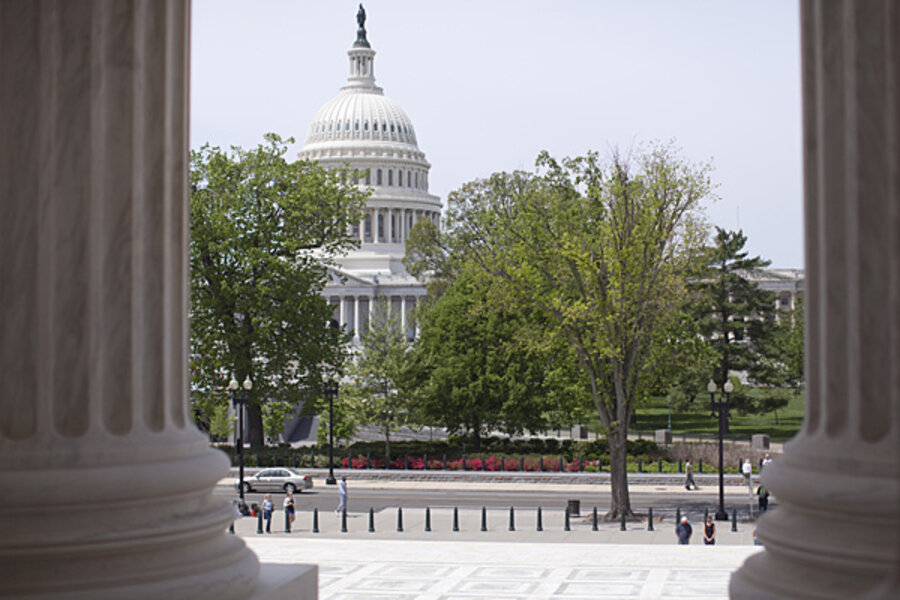Why a carbon tax is great – and very complicated
Loading...
A carbon tax has great appeal. It could reduce the risk of climate change by building emissions costs into market prices, thus discouraging the use of carbon-based fuels. And it would make a lot of revenue available for a broad range of purposes including reducing other taxes, new spending, or cutting the deficit. A nice new paper by Adele Morris of The Brookings Institution and Aparna Mathur of the American Enterprise Institute describes the upside of a carbon tax and proposes one model for such a levy.
But enacting any form of carbon tax won’t be simple—and not just because of the well-known political challenges. In their own new paper, my Tax Policy Center colleagues Donald Marron and Eric Toder focus on three key design issues: The proper tax rate, collecting the tax, and what to do with the revenue. Here are just some of the issues Donald and Eric raise:
The right rate
In theory, the tax on carbon ought to equal to the marginal social cost of carbon emissions. But the real costs of those emissions play out over decades and figuring them accurately is nearly impossible.
As it happens, there are literally hundreds of estimates in the economic literature. In part, that’s because the studies use very different discount rates—an important variable when projecting costs over many years. After correcting for these differences by setting the discount rate at a consistent (and conservative) 3 percent, the mean social cost is $25 a ton. But the projections still vary widely (they come with a standard deviation of, yikes, $22).
As if that’s not problem enough, Eric and Donald raise an even more vexing question: Should policymakers focus on just the domestic cost of carbon emissions, or on the worldwide impact? After all, climate change is a global phenomenon and the U.S. bears less than 10 percent of its social cost.
Collecting the tax
Once again, theory bumps into reality. Government could simply monitor all emissions and tax them at a uniform rate. But with hundreds of millions of emissions sources—think every tailpipe in America–this is impossible (or, at least, prohibitively expensive).
There are several alternatives. The most frequently discussed would have government tax the carbon content of fuels, rather than the emissions themselves. Tax could be collected at the mine or wellhead, or at the refinery. The trouble is, this would raise prices for domestic production, put some U.S. firms at a competitive disadvantage, and encourage Americans to import carbon-intensive goods.
This problem could be addressed by border adjusting the tax based on the carbon-content of goods, but this solution could run afoul of international trade rules. Another option: tax credits for some hard-hit domestic producers.
What to do with the money
And there would be a lot of it. CBO estimates that a $25-per-ton tax increasing at 2 percent-a-year would generate $1 trillion over a decade. Because low-income households would pay a larger share of their income in carbon taxes, at least some of that revenue ought to be used to ease their burden.
Policymakers could reduce income or payroll taxes for low-income households. They could also use some carbon tax revenue to reduce the corporate tax rate, which would improve overall economic efficiency but wouldn’t do much to help those low-income households. In a 2013 paper, Donald and Eric figured that dividing the revenue between a refundable tax credit and a corporate tax cut would increase incomes for those at the top and bottom of the economic food chain. Just one problem: It would raise taxes for those in the middle.
Morris and Mather acknowledge all of these issues but bravely propose one possible design. They suggest a tax that starts at $16 per ton of CO2 and increases at inflation plus 4 percent each year. They estimate that such a levy would reduce emissions by 9.3 billion tons and raise $2.7 trillion in new revenues over the next 20 years. They’d split the money three ways: To reduce the deficit by $800 billion, cut the corporate tax rate from 35 percent to 28 percent, and offset some of the carbon tax cost for low-income households.
The Morris/Mather design is a good starting point. But as Eric and Donald note, once a carbon tax moves from the realm of theory to economic and political reality, it will face a myriad of tough questions—and few clear answers.







